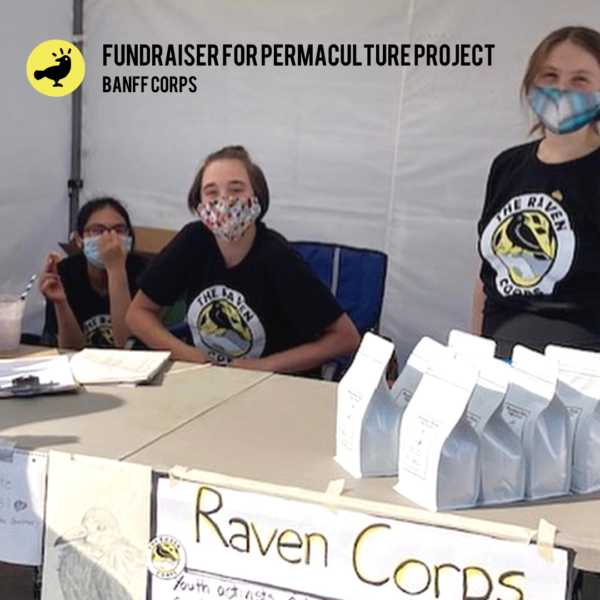
- What was your operation?
Raven Corps Banff organized a coffee fundraiser to raise money for a permaculture project in Guatemala. We set and met our goal of 500$ which went directly to building an agroforestry greenhouse. Permaculture is “permanent culture” and aims to promote earth care, fair share and people care. Through building of a permaculture farm the Mayan farmers have created a compassionate community, food access, protection of Mayan knowledge/culture and educational resources and opportunities. You can learn more about it at https://www.cieloglobal.org/.
- What motivated you to perform this operation?
We believe that the goal of fundraising for a project that is outside of our own country is to help the supported community create economic independence so that eventually permanent structures/systems will eliminate the need for fundraising. This project not only did this, but it also helped create sustainable food options and protected the history, culture and practices of the Indigenous Mayan people. It’s also pretty cool to have global connections such as this one and to watch the project grow knowing we contributed a little to its success.
- What did you sell for your fundraiser?
We ended up deciding to sell coffee, as it is a fairly common drink in most people’s daily life here in our community. First we reached out to our first choice company who had an option to fundraise on their website. I talked to the manager/owner by phone and decided how much, by when, and how to pay. We decided to buy 100 bags upfront at a discounted price (as most 3rd parties will do), since we were planning to sell the coffee at a market. Some companies will also do an order form which is a great option if you plan to go door to door or if paying upfront for the product isn’t an option.
- How did you determine the price of the items you sold? What was your thought process behind the pricing?
Our goal was to raise 500$. The coffee bags that we bought retail for 18$ and were sold to us for 13$. This means that if we sold 100 bags we would profit 500$. This took into account what the product normally retails for and our aim for selling it around the same price.
- How long did it take you to put the operation together?
Including all the organization the whole operation took 2.5 months. We suggest that you reach out into your community and post online early to get feelers for what local companies you might want to work with and where & how you want to sell products (e.g., at a farmers market, grocery stores, online, door to door, etc.)
- What were the challenges involved with a 3rd Party Fundraiser?
Volunteering with a third party takes strong organizational skills, efficient communication and financial resources. You have to expect people to say no and try to negotiate a plan B. Being a youth activist gives you strengths and weaknesses. People often underestimate your professionalism so it is important that you are well researched, formal in emails and out-going in-person and when making sales. A third party fundraiser also takes financial resources. Our Lead Raven, Emily, spent the money upfront for the coffee. She made the money to buy the coffee bags by working throughout the summer and then was paid back after the fundraiser was complete.
- What do you wish you knew before you started planning this operation?
It’s important to reach out to the community. Sometimes as youth activists we feel the need to prove we can do it on our own, but a supportive community can make the process much less stressful. For example, we ended up borrowing a tent, tent weights and tables from a local artist. In return we sold some of her products and made a percentage of the products we sold for her. We also borrowed a tap square from a local business and sent extra coffee online via drop-off.
- Now that the operation is over, what do you think you could have done differently to make the operation even more successful? What outside factors could have been different that would have made the operation even more successful?
It’s important to give yourself lots of time (1-2 months) to organize before the day you plan to sell (especially when working with a third-party). The amount of time waiting for other people to get back to you is out of your control. Taking the time to create a quick fact sheet that houses your selling points is also a helpful tool for selling day. It’s also helpful to have a plan in case you don’t sell all the product in one day. We didn’t have a plan, and had to make one after to sell the remaining coffee. This might be a second market day, divide product to go door to door in different areas or an online order and drop-off system. Overall if you plan on doing a third party fundraiser start early, keep organized and enjoy connecting to your community!
